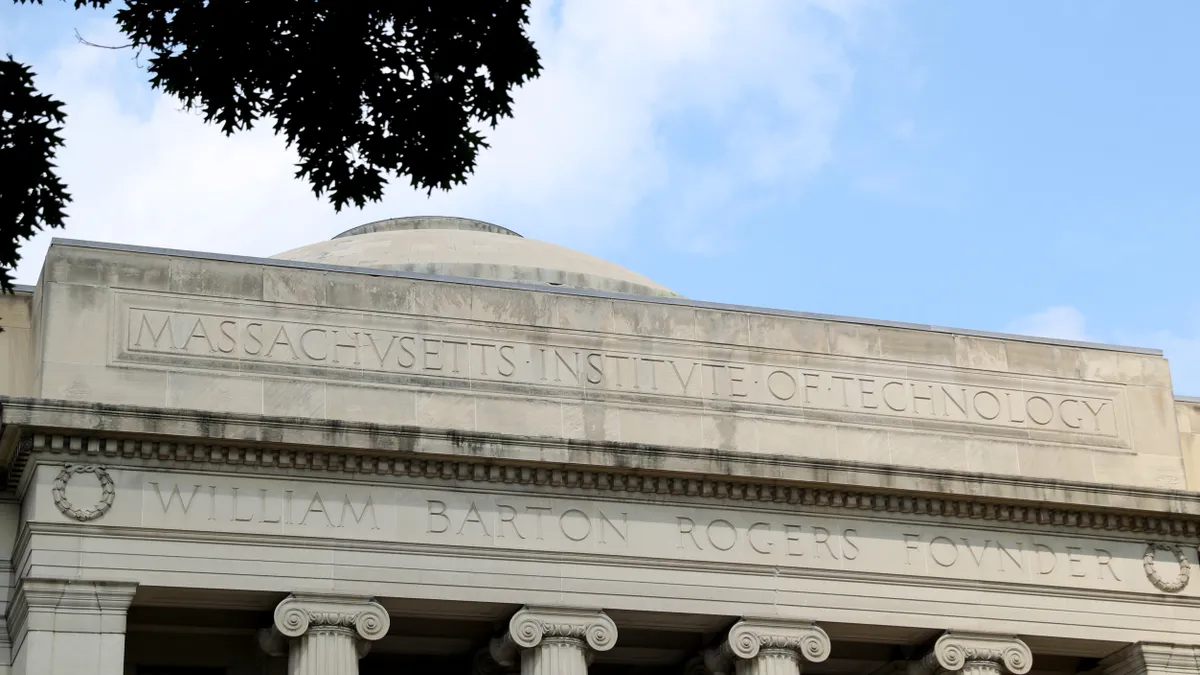Editor's note: In this column, we look ahead at how the coronavirus pandemic could affect aspects of higher ed in the long term.
College admissions has never been a simple process. But aspects of it — not accounting for complications such as early acceptance and rolling admissions policies — have been relatively consistent nationwide.
Generally, colleges have expected students to pick their school by May 1. To secure their commitment to an institution, administrators host grand open houses, complete with oodles of swag, guided tours and the opportunity to meet instructors face to face.
By summer, officials largely have a concrete picture of their enrollments, and thus their budgets, after calculating the number of pledged students who they believe will back out before the academic year begins.
The coronavirus has upended virtually every one of these admissions standards. As it took hold in the U.S over the past month, splendorous events were scrapped. Campus tours went virtual. Though the May 1 commitment date was already diminishing in relevance for admissions officers, many institutions formally abandoned it in favor of a June 1 deadline (and beyond).
Some large institutions and public systems that use standardized tests to filter the tens of thousands of applicants they get each year decided to stop asking for SAT or ACT scores, at least temporarily -- much to the delight of advocates who have campaigned for test-optional policies.
Institutions' flexibility comes partly from their recognition that students need it right now, explains Madeleine Rhyneer, vice president of consulting services and dean of enrollment management at the college advisory firm EAB.
Exam providers canceled or rescheduled SAT and ACT testing dates, which would limit students' ability to take them. The coronavirus has also jeopardized some students' and families' finances, which could affect their ability to afford college.
The changes colleges are making also involve an element of self-preservation, Rhyneer said. Escalating discount rates have forced private institutions to be more tuition dependent. Nationwide, tuition was about 47% of public colleges' total educational revenue in the 2018 fiscal year. That's compared to 36% in 2008. Colleges in precarious financial positions likely couldn't afford even a mild enrollment slide.
Administrators will try every possible strategy to meet their benchmarks, which the coronavirus muddled, but they will also be impaired by a shrinking pool of high school graduates.
The extraordinary wiggle room colleges are giving students on committing to enroll was illustrated last month in a statement from Jon Boeckenstedt, Oregon State University's vice provost for enrollment management. He was announcing new admissions criteria, including the university's move to a June 1 deadline.
Boeckenstedt, a well-recognized admissions professional, urged applicants who were considering other colleges to ask them for an extension to June 1, too. "They don't have to grant one, of course, but we would hope that common sense and compassion would cause them to consider your request seriously," he wrote.
Colleges now have leeway to poach students who have committed to other institutions, which was widely considered taboo until the National Association for College Admission Counseling (NACAC) stripped provisions in its ethics code that had warned schools off it.
"[W]e expect to see significantly more recruitment activity — and in all likelihood, more aggressive recruitment — after the May 1 and June 1 deadlines this year," David Hawkins, NACAC's executive director for educational content and policy, wrote in an email to Education Dive.
Once colleges have a rough idea of their enrollment numbers for the fall, they likely will sweeten financial aid packages to try to seal the deal for students, Rhyneer predicted.
Time for test optional?
It's too early to tell which of the new enrollment trends will persist when the pandemic subsides. Ongoing efforts that got a boost from the situation may have a better shot, however.
The coronavirus rapidly accelerated the adoption of test-optional and similar admissions standards, which are more likely to become permanent. Test-optional advocates rejoiced in particular when the University of California System suspended its requirement that students entering in the fall of 2021 submit an SAT or ACT score. The system, which had been sued over its use of standardized tests in admissions, had been weighing such a move permanently.
Observers believe this could serve as a de facto pilot year for the system to try out a test-optional policy. If it became permanent, it would likely cause a ripple effect among other institutions. In the first week of April, at least 30 institutions announced new test-optional policies for students enrolling in fall 2021, according to the National Center for Fair and Open Testing.
The SAT and ACT providers have taken notice, and they likely have cause to worry as the tests represent a major revenue stream, Rhyneer said.
David Coleman, CEO of the College Board, which administers the SAT, said in a recent interview with the nonprofit Khan Academy that if the virus disrupts K-12 schools in the fall, then they would need an at-home version of the SAT. He added that the College Board was preparing for that scenario.
Hawkins expects test-optional policies will likely last. "In many cases, the decision to waive test score requirements is itself the most difficult step in moving to test-optional policies," he wrote, "and this crisis has pushed many colleges over that threshold already."
Whether the new deadlines or online recruitment methods will stick around is less clear. Rhyneer said colleges may end up with a hybrid system for courting students once campus activities resume. They'll still host open houses, but they will augment them with virtual video tours of campus, she said.
Hawkins wrote that the crisis will force college admissions to emphasize student recruitment.
"Even when life gets back to some semblance of normal, there will be potentially years' worth of financial implications, similar to the 2008 recession, for colleges to sort out," he wrote.

















